Greenworks 60V 17″ Brushless (Push) Lawn Mower, 4.0Ah Battery and 3A Charger
$399.99 Original price was: $399.99.$299.99Current price is: $299.99.
| Brand | Greenworks |
| Power Source | Battery Powered |
| Material | Plastic |
| Color | Green and Black |
| Style | lawn mower |
| Item Weight | 37.47 Pounds |
| Cutting Width | 17 Inches |
| Number of Positions | 6 |
| Operation Mode | Automatic |
| Product Dimensions | 51.96″D x 19.09″W x 40.94″H |
82 reviews for Greenworks 60V 17″ Brushless (Push) Lawn Mower, 4.0Ah Battery and 3A Charger
Only logged in customers who have purchased this product may leave a review.
About this item
- 60V Powerful Cordless Mower: Experience the freedom of cordless mowing with this 60V push lawn mower, delivering up to 40 minutes of runtime on a fully charged 4.0Ah battery. Recharge quickly with a full charge time of just 80 minutes, ensuring your yard work is efficient and uninterrupted.
- Advanced Brushless Motor: The high-efficiency brushless motor provides superior power and extends the mower’s longevity. It ensures consistent performance, allowing you to tackle even the toughest mowing tasks with ease and reliability.
- Versatile Cutting Options: Achieve the perfect cut for any lawn with the single lever 6-position height adjustment, offering a cutting height range from 1.5″ to 3.15″. The 2-in-1 feature enhances versatility, allowing for both mulching and rear bagging, adapting to your lawn care needs in various environments.
- Lightweight and Durable Design: The 17″ rust-resistant deck is designed for easy maneuverability and long-lasting use. Its lightweight construction ensures effortless handling, making it perfect for navigating tight spaces and uneven terrain.
- Includes: Battery-operated lawn mower comes with mower, grass collection bag, 60V 4.0Ah battery, 60V 3A charger, and operator’s manual. It offers a 4-year tool and 4-year battery warranty
Item details
| Brand Name | Greenworks |
|---|---|
| Model Number | MO60L419 |
| UPC | 195526196396 |
| Manufacturer | Greenworks |
| ASIN | B0DC12WH48 |
| Item Type Name | lawn mower |
Features & Specs
| Power Source | Battery Powered |
|---|---|
| Number of Positions | 6 |
| Operation Mode | Automatic |
| Maximum Adjustable Cutting Height | 3.15 Inches |
| Minimum Adjustable Cutting Height | 1.5 Inches |
Style
| Color | Green and Black |
|---|---|
| Style Name | lawn mower |
Measurements
| Item Weight | 37.47 Pounds |
|---|---|
| Cutting width | 17 Inches |
| Item Dimensions D x W x H | 51.96″D x 19.09″W x 40.94″H |
Additional details
| Material Type | Plastic |
|---|
Product Description
Achieve a flawlessly manicured lawn with the Greenworks 60V 17″ Cordless Lawn Mower—engineered to deliver professional-grade power with zero compromise. Combining the raw performance of gas mowers with the eco-friendly convenience of cordless technology, this powerhouse eliminates fumes, noise, and maintenance hassles
The advanced brushless motor, fueled by a high-capacity 60V lithium-ion battery, delivers up to 40 minutes of relentless cutting on a single charge—perfect for maintaining small to midsized lawns. Its rugged 17-inch steel deck ensures precision durability, while the intuitive 6-position height adjustment lets you customize grass length from lush to crisp in seconds.
All while operating at whisper-quiet decibel levels. Lightweight, emission-free, and engineered for ergonomic comfort, the Greenworks 60V redefines modern lawn care: where brute strength meets effortless elegance.

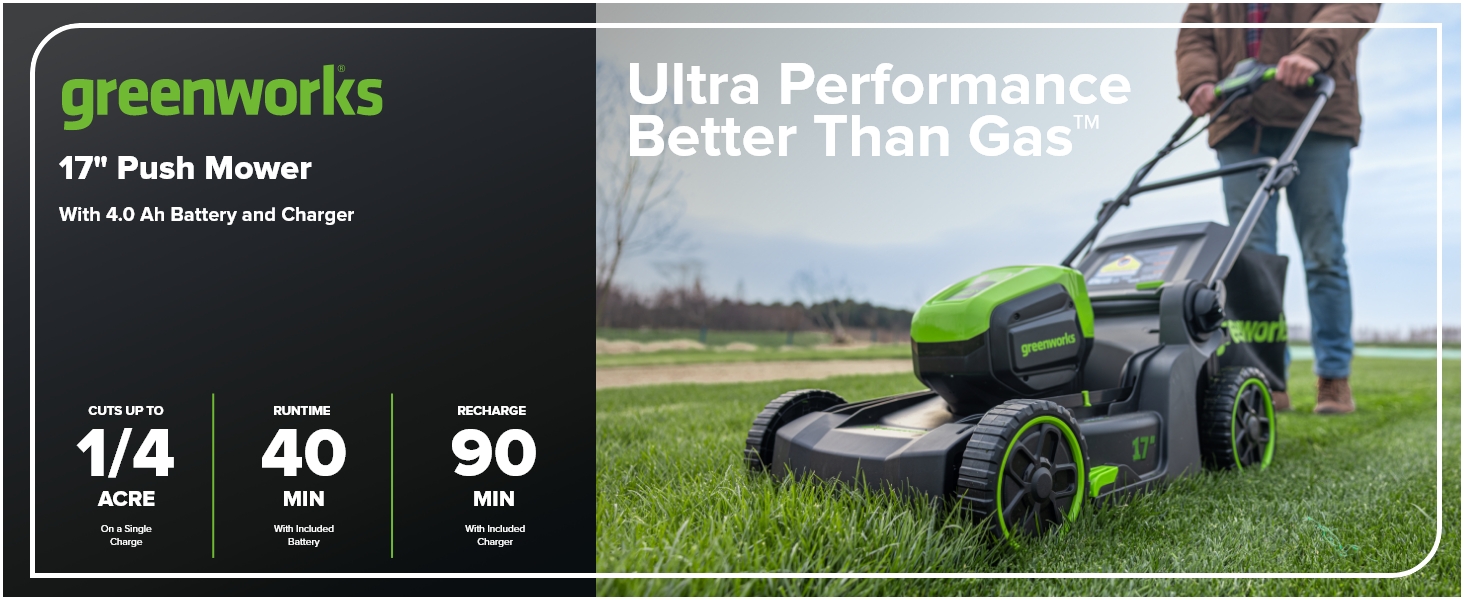
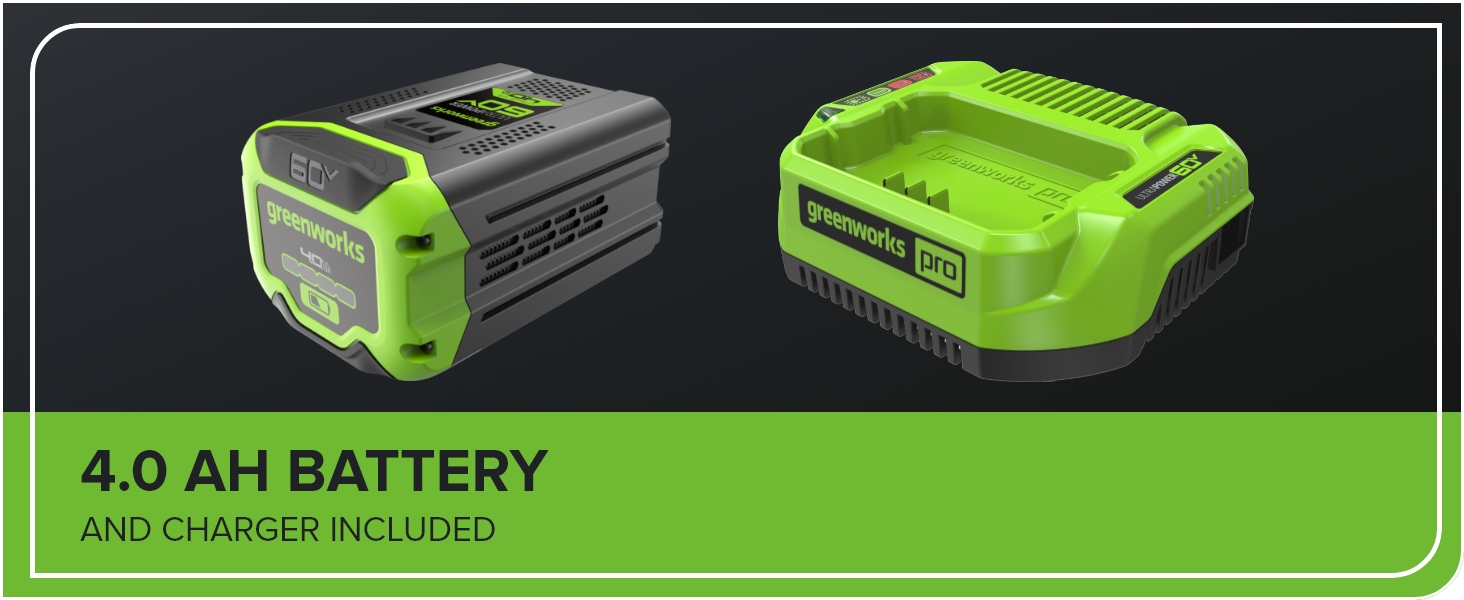
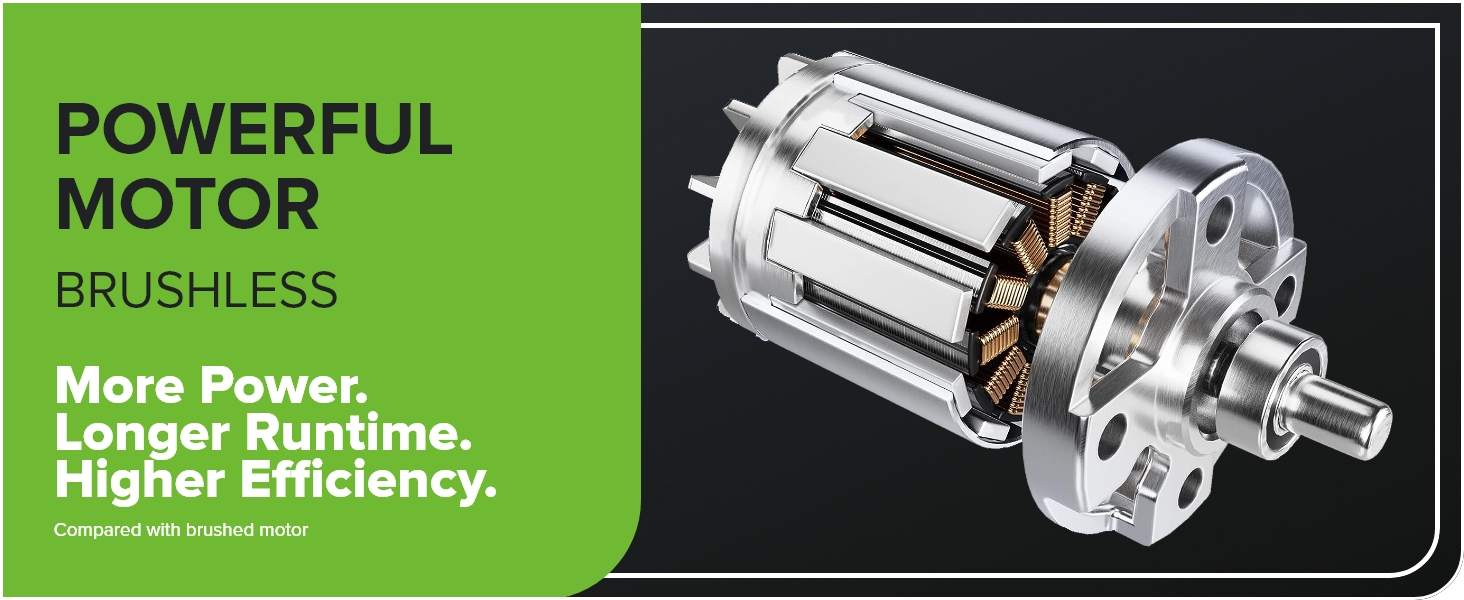

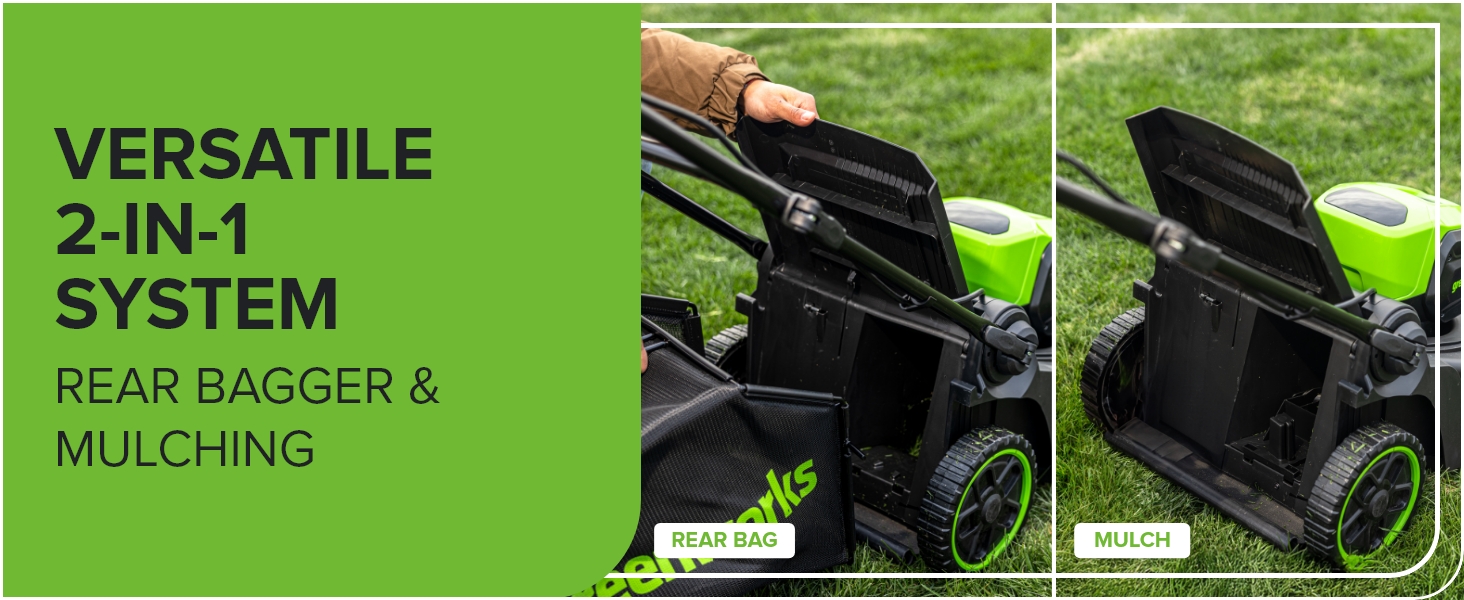
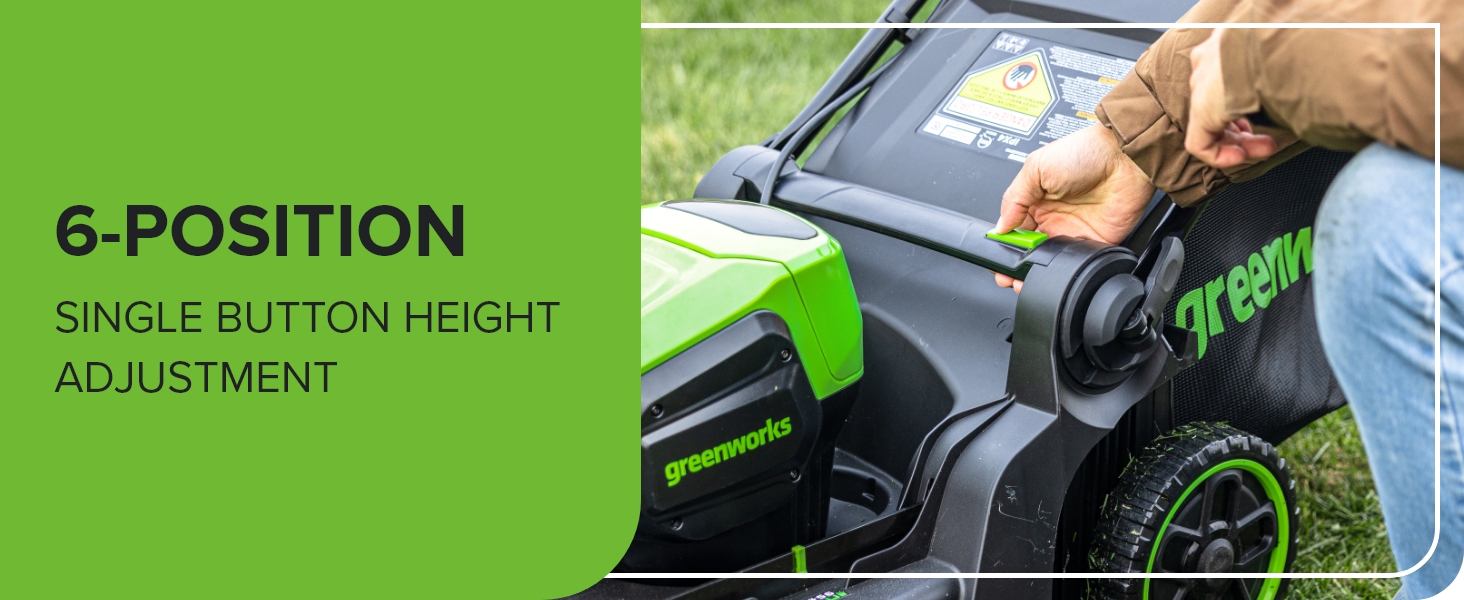
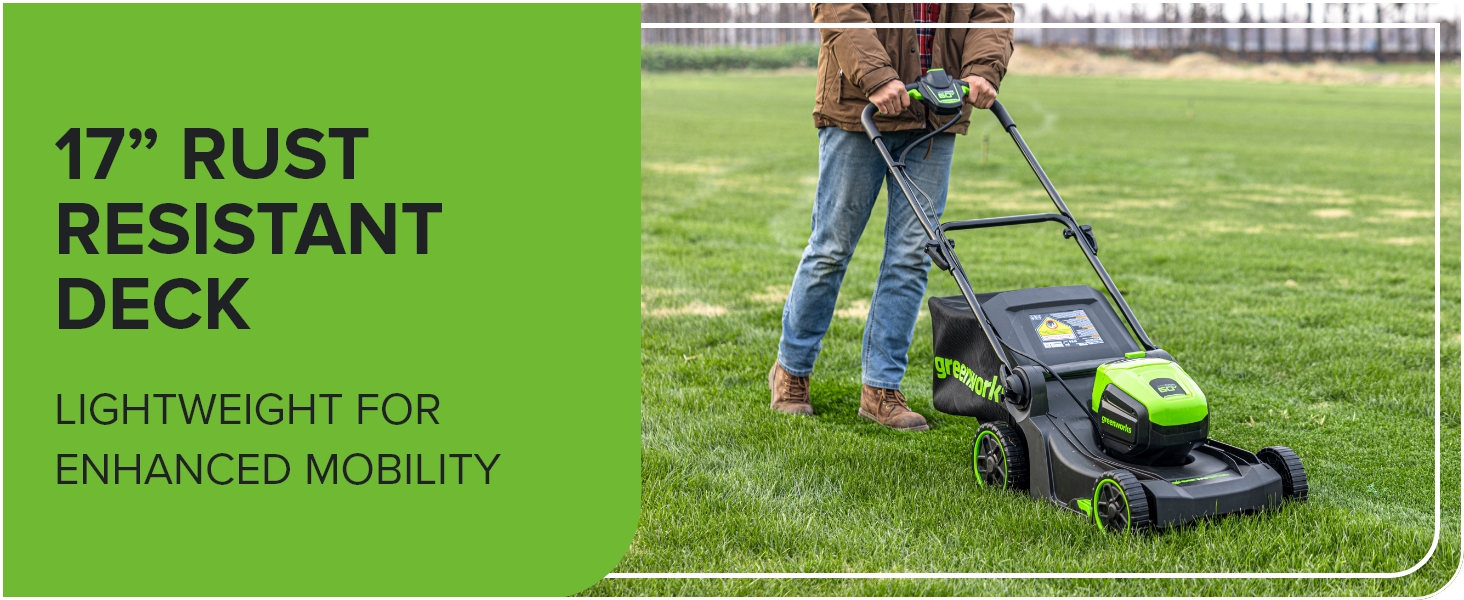

Related products
Walk-Behind Lawn Mowers
Walk-Behind Lawn Mowers

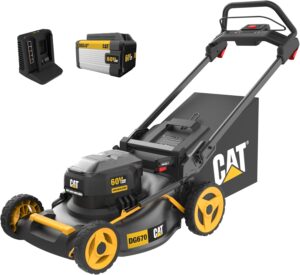 Cat DG670 60V 21” Cordless Lawn Mower 3-In-1 Cutting Modes, Brushless Lawn Mower with TorqLogic, Easy-Adapt Walk-Behind Push Lawn Mower – Battery & Charger Included, Black, Yellow
Cat DG670 60V 21” Cordless Lawn Mower 3-In-1 Cutting Modes, Brushless Lawn Mower with TorqLogic, Easy-Adapt Walk-Behind Push Lawn Mower – Battery & Charger Included, Black, Yellow 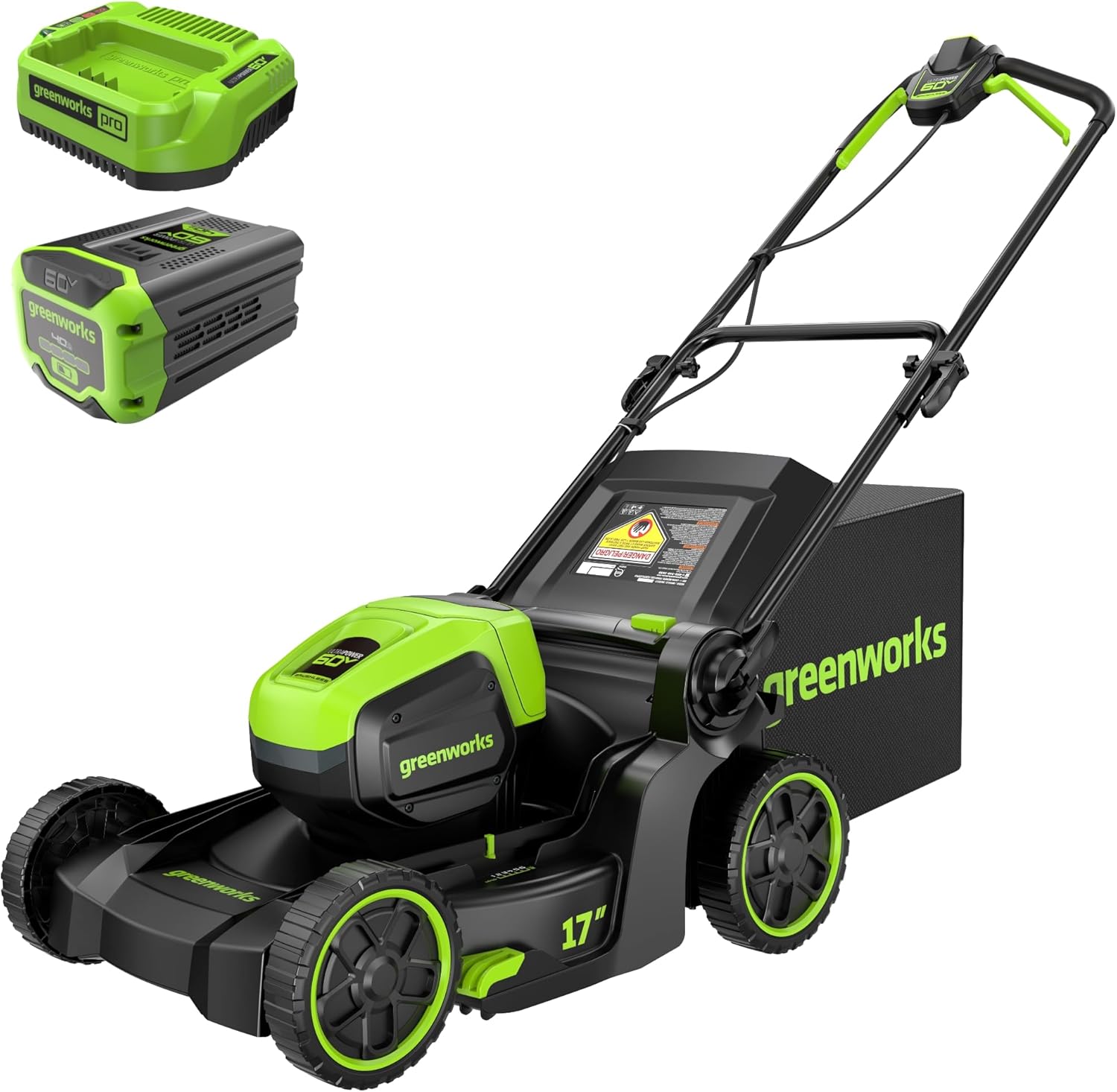

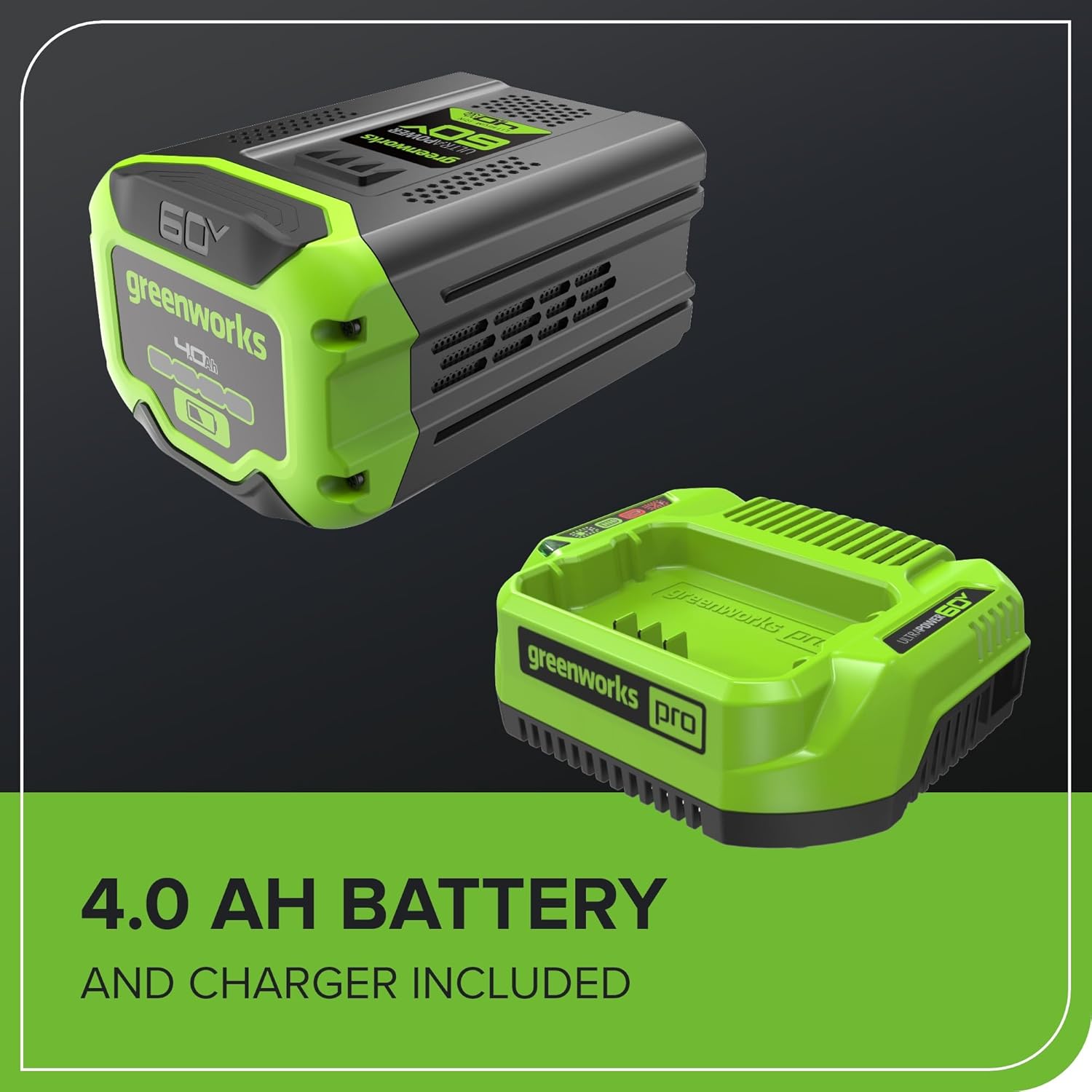

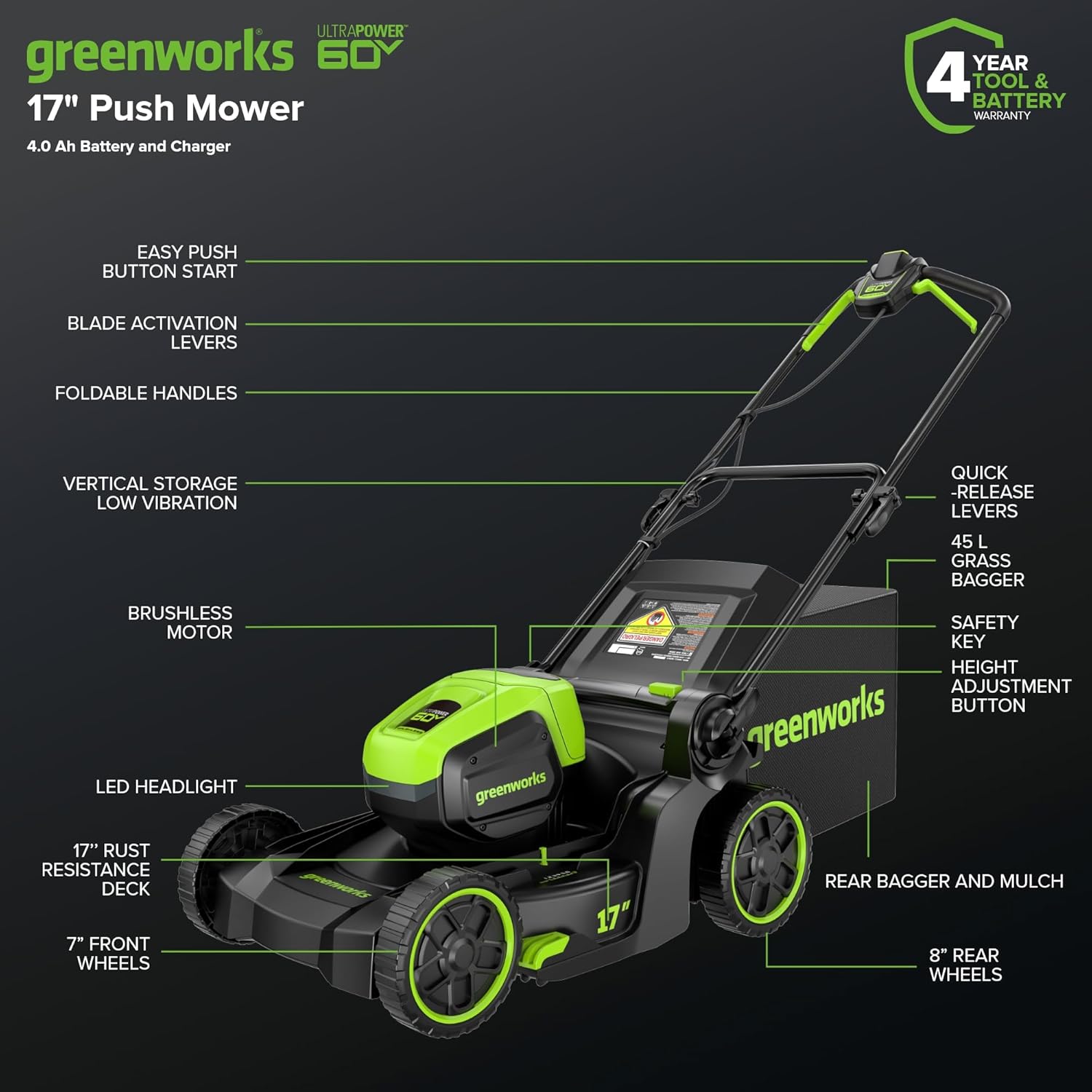

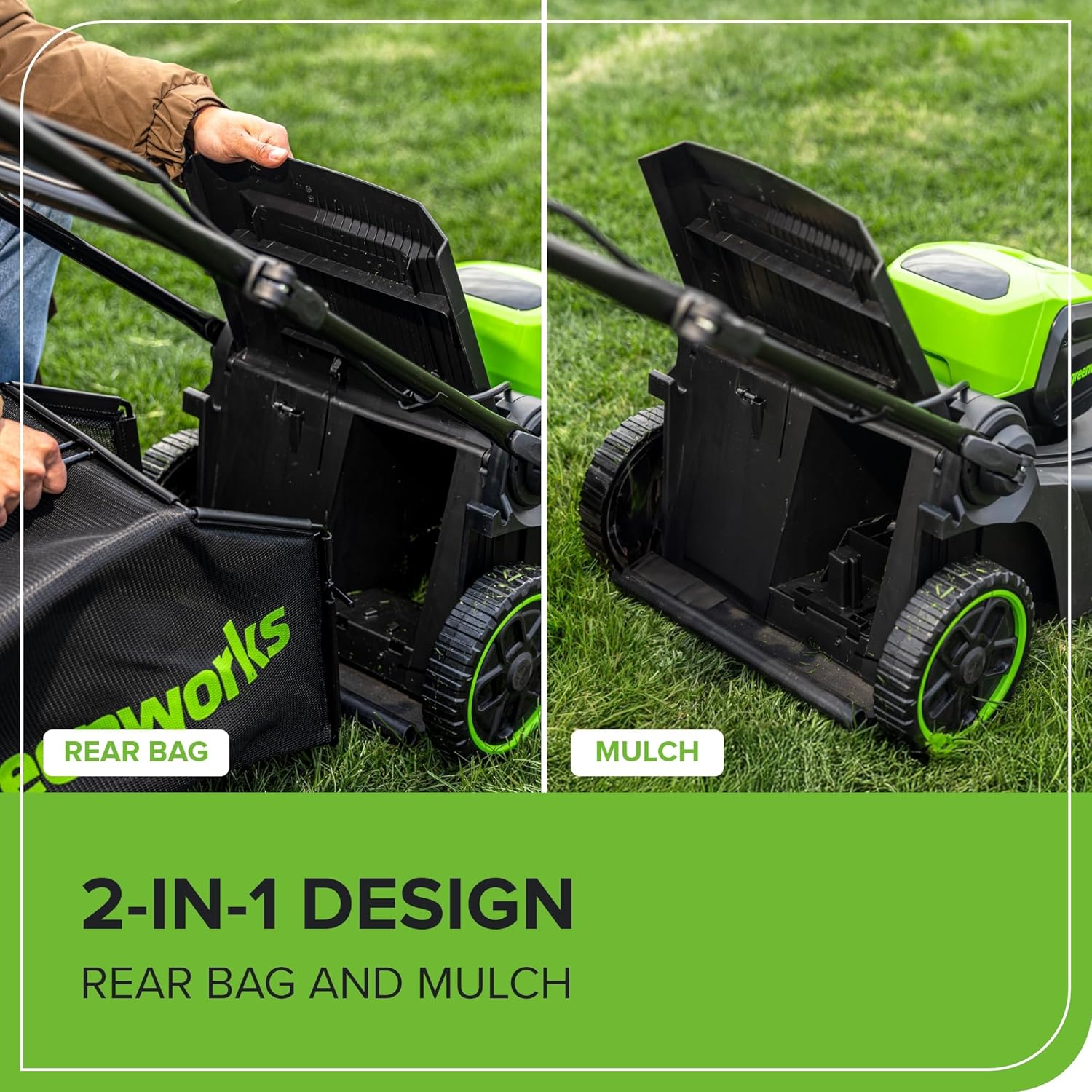
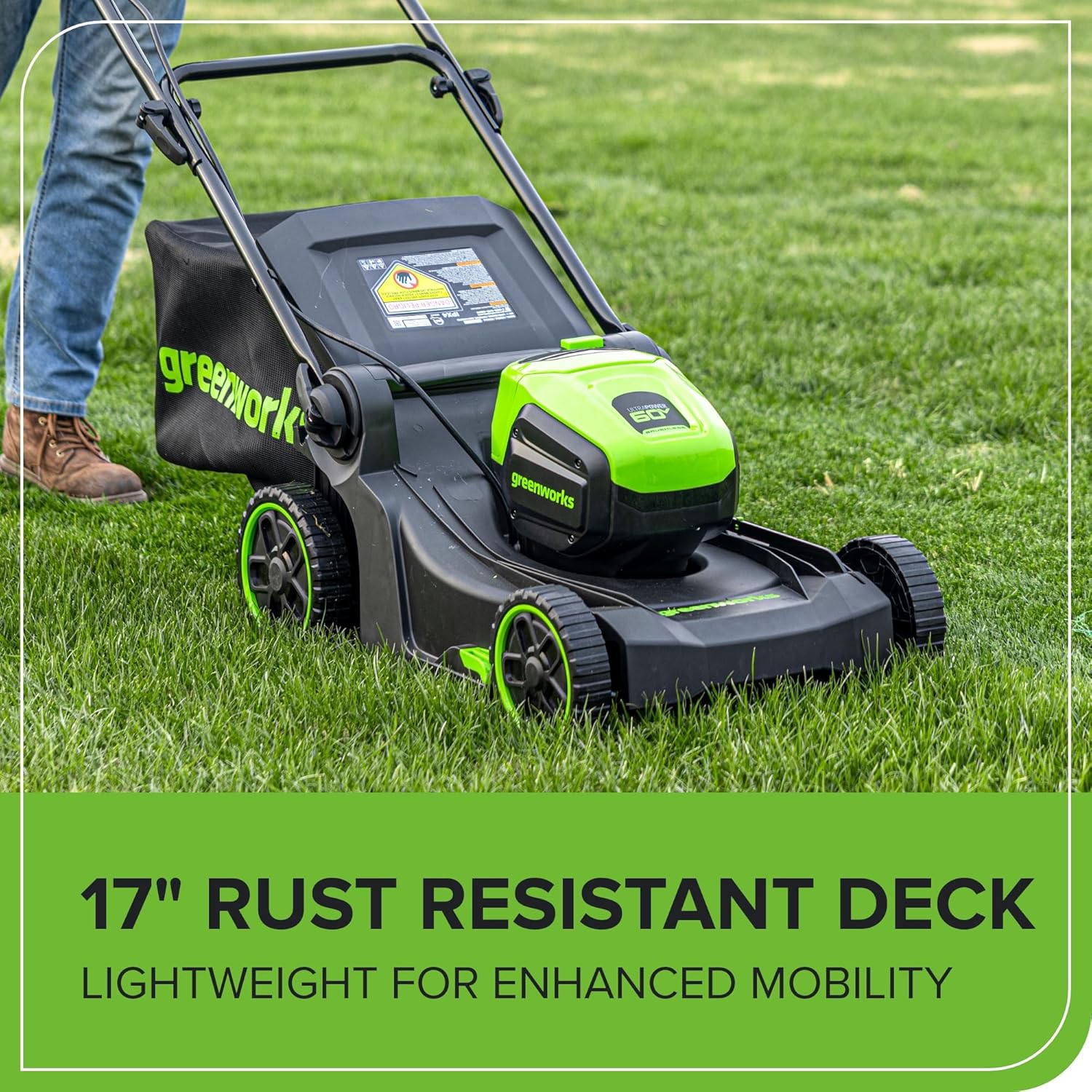
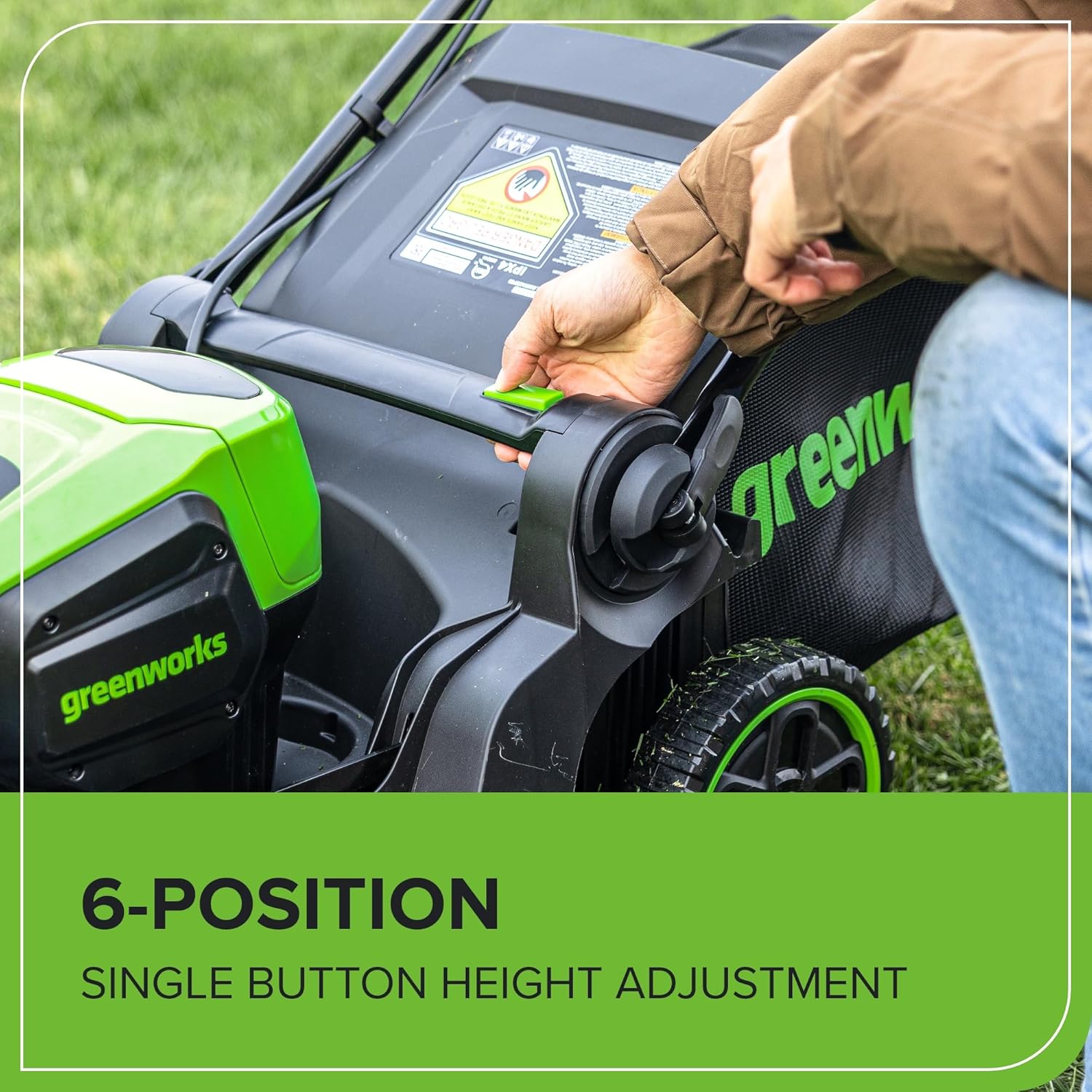
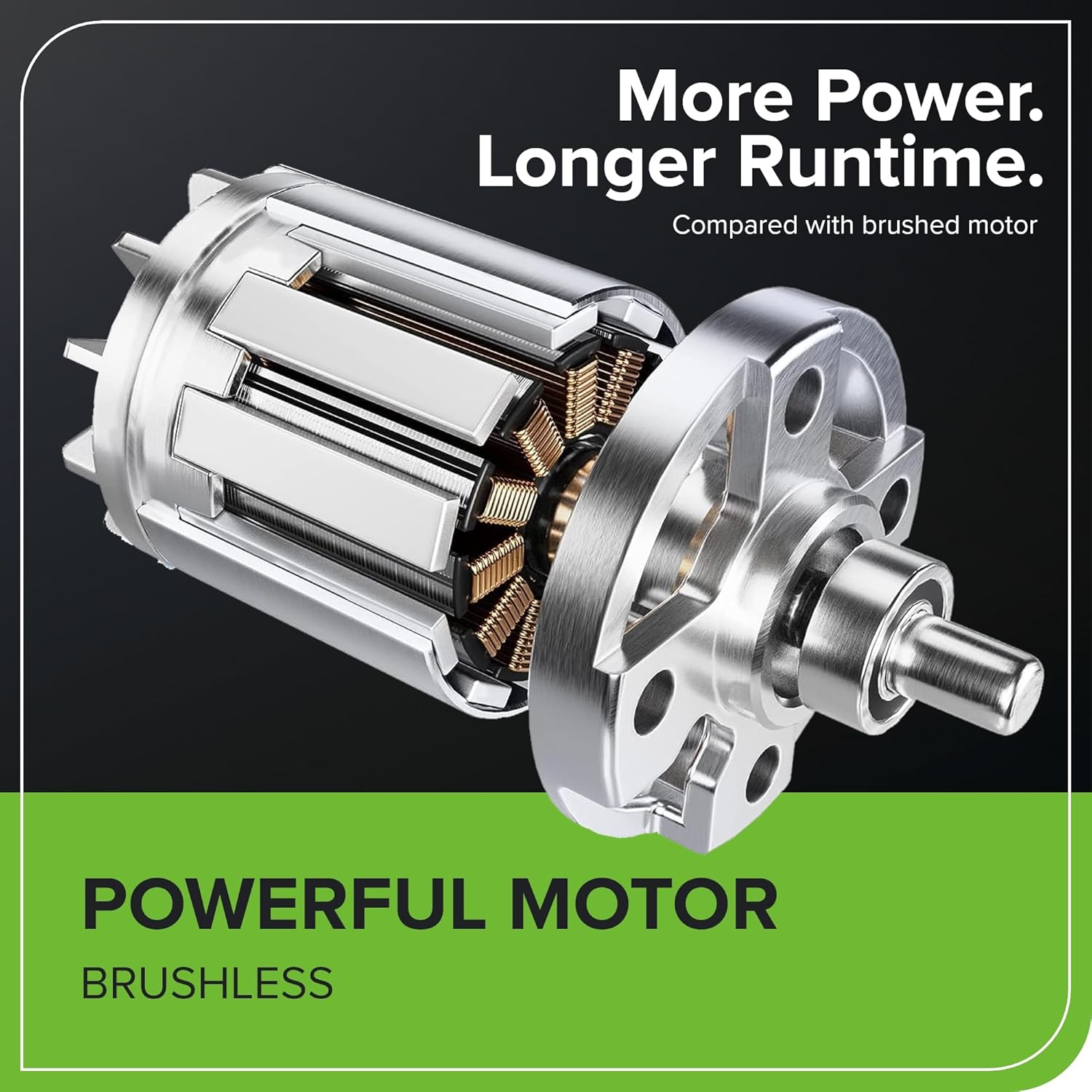

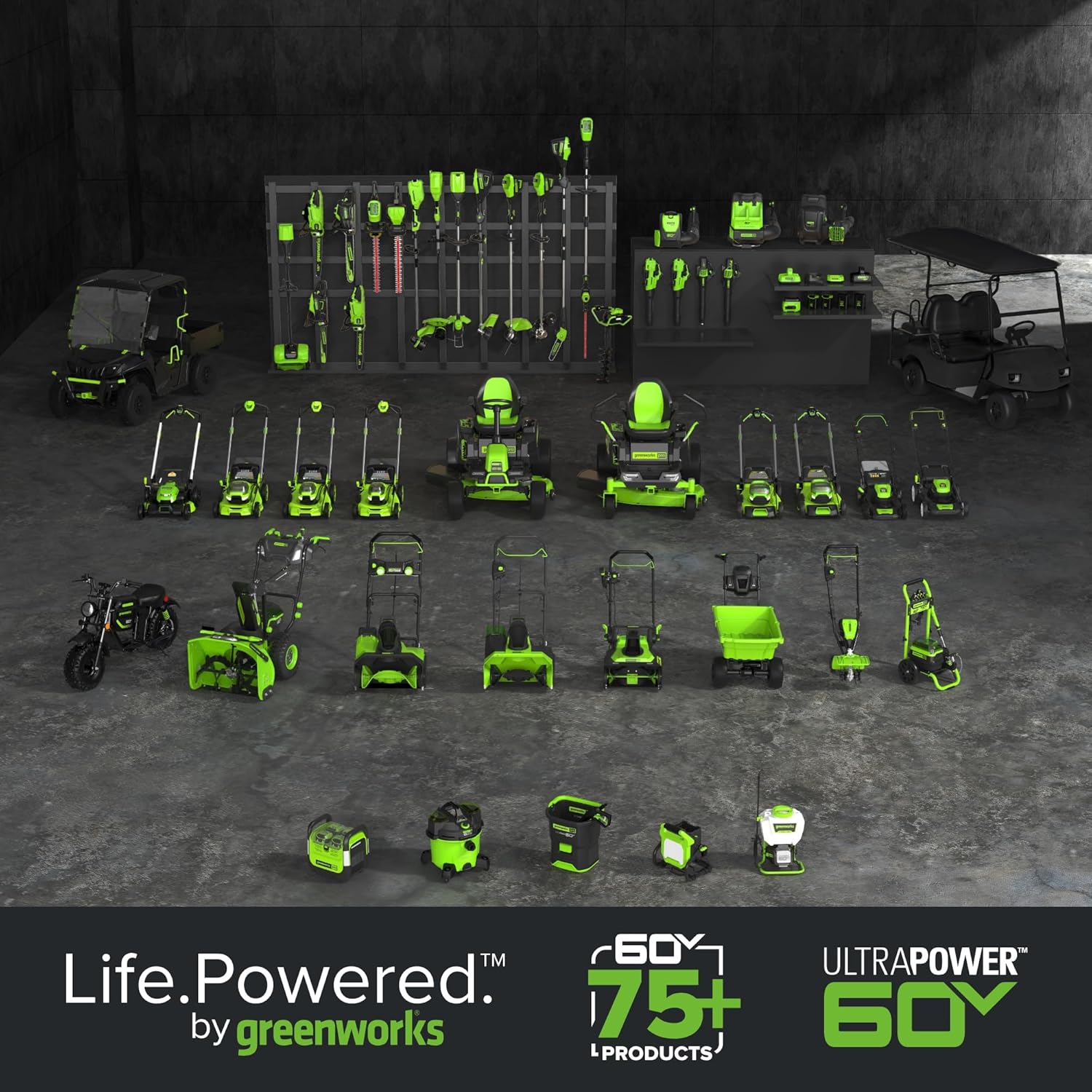
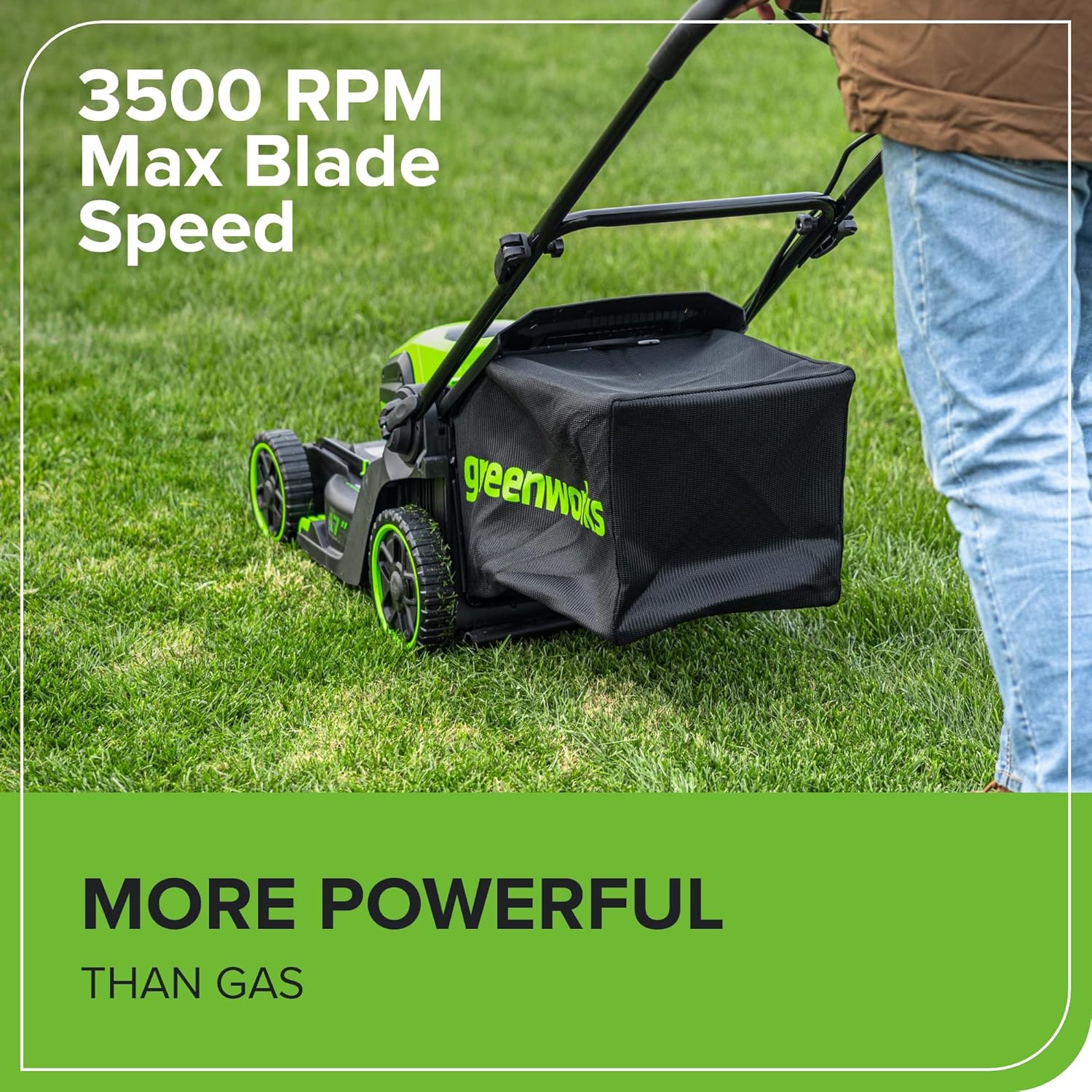

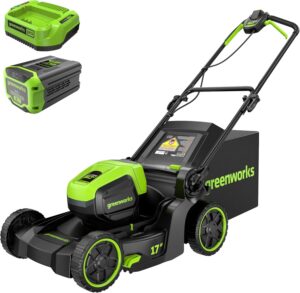






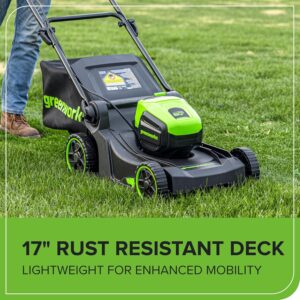
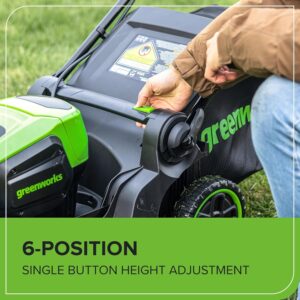



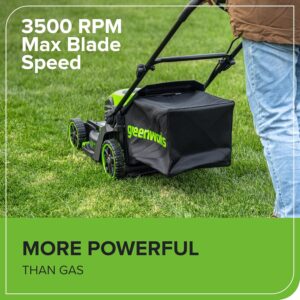

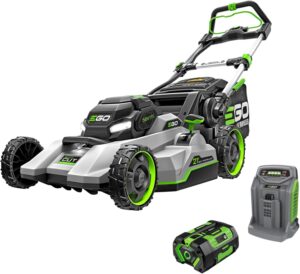
Mower issue #1:
The mower keeps the "traditional" design of gasoline push mowers with two wheels forward, followed by the deck, then the following wheels. This means that it has the same issue that comes with gasoline powered push mowers where the forward two wheels crush down the grass before the blades can cut it. This is a problem with this mower in particular because of mower issue #3, below.
It's not clear why Greenworks chose to go this route. For a gasoline powered mower, the designer is pretty much stuck because the power source is a big hunk of iron that needs to be mounted in the middle of the deck to swing a big blade around, so the wheels naturally need to be placed on the four corners of the deck to keep the whole thing stable. Yes, I realize this is a bit of an oversimplification, but most gasoline powered mowers do it this way to keep costs down. The Greenworks mower, however, doesn't really have that set of problems. Placing the blades before the front wheels (very doable because "electric") would provide a much better cut and would eliminate issue #3.
Mower issue #2:
The mower achieves its 25" cut width by using two side-by-side blades under the deck. The blades are considerably further from the mower deck edge than any other mower I've owned over the years. As a result, the amount of uncut grass next to the mower deck is greater than with other mowers so I find myself trimming more than I had been.
---
Mower issue #3:
As mentioned, the mower uses side-by-side blades. This implies, and is true in fact, that the blades are short. The short blades seem to have less of a vacuum effect to pick up grass that is lying down. Enter issue #1; the front wheels crush down the grass before the blades can get to it then the low vacuum isn't enough to pick the grass up completely so the grass along the wheel lines is a bit longer than elsewhere. When the grass eventually un-crushes itself, you end up with an uneven cut. At this point you either live with the uneven cut or you end up going over the lawn a second time to fix the issue. Which brings up the other issue with the side-by-side blades.
---
Mower issue #4:
The dual blade design misses spots. I don't mean that there is a line where the blades miss cutting the grass, but rather that one will be cutting straight, look behind and see a random clump of uncut grass right in the middle of the pass you’re currently making. If you run over it a second time, it'll then be cut, but it's unclear why this happens. Playing with the self-propelled speed control, it seems that the uncut clumps are more prevalent when cutting slower. That's very counterintuitive, but testing it repeatedly, that really does seem to be the case.
---
Mower issue #5:
For all of the reasons given in the previous issues, the default blade speed pretty much guarantees the need to mow the grass twice, either by making two passes every time or by mowing once, then going back and mowing a second time. Interestingly, Greenworks provided a "turbo" button to increase the blade speed. Increasing the blade speed does seem to mostly mitigate issues #1 through #4. After a lot of experimentation, it seems to be the case that running the mower in turbo mode, using the self-propel speed control to set the speed to ~3/4 results in an acceptable cut without the need to cut the grass twice.
---
Mower issue #6:
The controls. Oh, the controls. How do I hate thee, let me count the ways...
The self-propel speed control is placed such that it's really easy to change using either thumb. You know what else can easily change that speed? EVERYTHING!!! Tight spot backing into a bush, speed change. Pull the mower towards yourself and touch the handle, speed change. Remove a hand from the handle to grab a low hanging branch, speed change. Sometimes I'm just walking along and the speed feels a bit off, look down and see the speed has changed. No idea how that happened... Clearly, nobody actually tested the mower prior to releasing it to the public as this was very noticeable within 10 minutes of using it.
Which brings me to the self-propel engagement control. These are two little paddles towards the user behind the troublesome speed control. When you pull the mower towards yourself to, you know, mow like a normal human, guess what bumps into you before the handle? If you said the self-propel engagement control, you would be correct! If residential lots are perfectly flat, this would probably never be an issue, but where I live there is very little flat land. Try mowing a ditch or a steep bank and *not* come into contact with the handle. It's extremely annoying because you're pulling the mower up the bank and suddenly the thing jumps forward and locks the wheels so that you can only go forward.
Clearly some thought was given into control accessibility, but how about expending some thought to protecting those controls from issues that come with normal use.
---
Mower issue #7:
Well, I say issue, but it’s really about a design choice. The mower has two batteries. It uses these serially, meaning first one, then the other. It’s clear that the mower is aware of its batteries as it queries them for their status and is happy to run with only one battery installed. The problem with this choice has to do with the physics of batteries. By running the batteries serially, that places maximum load on first one, then the other battery. Battery physics says that the higher the load, the more energy is wasted. It’s easy to see: take a battery and discharge it over one hour, then use the current draw to come up with an amp hour rating. Do the same thing over 10 hours and calculate that amp hour rating. The second one will be significantly higher than the first. Convert each to watt hours and you have energy, with the latter having provided much more than the former for the exact same battery. You’ll also have stressed the battery a lot less in the second case.
Using its batteries in parallel would result in half the load on each battery resulting in improved runtime and less wear on each battery.
---
I know that all those issues sounds like a lot, but overall it really is a pretty decent mower. Here are a couple of bonus tips for things that were not obvious to me when I made the switch to electric.
Tip #1:
It hadn’t occurred to me how much the fumes from my old gasoline powered mower were keeping away insects. I very quickly found a cloud of insects forming around my face with the new mower. Taking a page from my old hiking days, get yourself a broad brimmed hat (good idea to keep the sun off you anyway), and spray the brim with DEET (ASIN : B0738NCJMH). This keeps most insects away from your face without needing to slather chemicals on your skin.
---
Tip #2:
Use hearing protection! I’d thought that without an explosion engine running that hearing protection wouldn’t be necessary. Engine/motor-wise, this is true. What I didn’t recognize initially is how loud things like small sticks, pine cones, etc. slamming into the deck would be. If you have none of these things in your yard, the mower is pretty quiet, but otherwise hearing protection is a must.
And ao far it's been very good.
1st major difference between this and my old gas mower
Pro - much quieter
Pro - very easy to maneuver
Pro - I'm no longer bagging the clippings. This does a fantastic job of mulching the clippings to undetectable . Very good feature .
Con - long grass or weeds tend to be pushed over rather than cut on the 1st pass.
Con- enging on my gas mower used to be very close . This one seems to sit farther in from the exterior cover .
I'm ending up weedwhacking along the fencing and obstacles more than in the past.
Overall I'm glad I purchased this .
I had trouble with modern gas not sitting well for extended times and causing issues with my old gas mower.
9-13-24 it’s possible I spoke to soon because it is taking me more time to “recharge” my batteries to mow me lawn,me fingers are for longer life from the battery 🙏